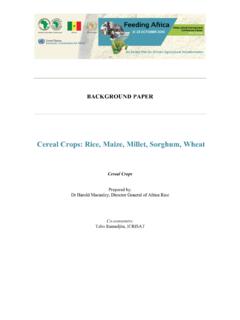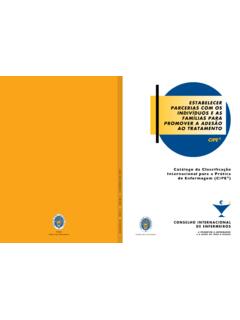Transcription of The Effect of Air Pollution on Migration: Evidence from China
1 NBER WORKING PAPER SERIES. THE Effect OF AIR Pollution ON migration : Evidence FROM China . Shuai Chen Paulina Oliva Peng Zhang Working Paper 24036. NATIONAL BUREAU OF ECONOMIC RESEARCH. 1050 Massachusetts Avenue Cambridge, MA 02138. November 2017. We thank Jianghao Wang for providing excellent research assistance. Any remaining errors are our own. The views expressed herein are those of the authors and do not necessarily reflect the views of the National Bureau of Economic Research. NBER working papers are circulated for discussion and comment purposes. They have not been peer-reviewed or been subject to the review by the NBER Board of Directors that accompanies official NBER publications. 2017 by Shuai Chen, Paulina Oliva, and Peng Zhang. All rights reserved. Short sections of text, not to exceed two paragraphs, may be quoted without explicit permission provided that full credit, including notice, is given to the source.
2 The Effect of Air Pollution on migration : Evidence from China Shuai Chen, Paulina Oliva, and Peng Zhang NBER Working Paper No. 24036. November 2017. JEL No. O15,Q53,Q56. ABSTRACT. This paper looks at the effects of air Pollution on migration in China using changes in the average strength of thermal inversions over five-year periods as a source of exogenous variation for medium-run air Pollution levels. Our findings suggest that air Pollution is responsible for large changes in inflows and outflows of migration in China . More specifically, we find that independent changes in air Pollution of the magnitude that occurred in China in the course of our study (between 1996 and 2010) are capable of reducing floating migration inflows by 50 percent and of reducing population through net outmigration by 5 percent in a given county. We find that these inflows are primarily driven by well educated people at the beginning of their professional careers, leading to substantial changes in the sociodemographic composition of the population and labor force of Chinese counties.
3 Our results are robust to different specifications, including simple counts of inversions as instruments, different weather controls, and different forms of error variance. Shuai Chen Peng Zhang China Academy of Rural Development (CARD) School of Accounting and Finance Zhejiang University M507C Li Ka Shing Tower The Hong Kong Polytechnic University Hung Hom Kowloon, Hong Kong Paulina Oliva Department of Economics 3151 Social Science Plaza A. University of California, Irvine Irvine, CA 92697-5100. and NBER. 1 Introduction Air Pollution has been shown to have causal impacts along an array of health and eco- nomic dimensions. A recent boom in the literature of air Pollution has spurred a number of studies in economics that have used quasi-experimental methods to measure how short- run exposure to air Pollution can impact infant mortality, adult mortality, hospitalization rates, health expenditures, hours worked, labor productivity, labor market decisions and test scores (Chay and Greenstone, 2003; Currie et al.)
4 , 2009; Deschenes, Greenstone, and Shapiro, 2012; Gra Zivin and Neidell, 2012; Hanna and Oliva, 2015; Arceo, Hanna, and Oliva, 2016;. Borgschulte and Molitor, 2016; Deryugina et al., 2016; schlenker and Walker, 2016). A few studies have also shed light on the e ect of medium and long run exposure to air Pollution (Chen et al., 2013; Anderson, 2015) as well as long-run impacts of in-utero exposure (Ad- hvaryu et al., 2016; Molina, 2016). Many of these studies have been done in middle-income countries, in some of which air Pollution is now considered the biggest environmental risk to human health. Taken together, these results suggest that the total cost of air Pollution is quite large as a share of income per-capita, although a formal aggregation exercise is difficult due to di erences in context, methodologies and pollutant measures across Some studies have estimated the marginal willingness to pay (MWTP) to avoid air Pollution for the US.
5 Through hedonic methods (Chay and Greenstone, 2005). Provided that individuals are free to move across locations, and therefore house values capitalize local amenities, this measure is likely to reflect all costs of air Pollution that are known to individuals (Roback, 1982;. Sanders et al., 2011). Costs associated with re-location might cause hedonic estimates to deviate from the willingness to pay for air Pollution (Bayer, Keohane, and Timmins, 2009). In addition, housing markets and location decisions in the developing world are often heav- ily regulated, causing further departures from the assumptions underlying hedonic methods. 1. An aggregation of impacts across studies has been done for the economic cost of carbon emissions (Hsiang et al., 2017). 1. This is especially salient in China , where migration decisions have been heavily constrained by the hukou system (Kinnan, Wang, and Wang, 2016).
6 However, the perception of air Pollution costs is still likely to be reflected in the key economic decisions behind hedonic methods: re-location and migration . Studying how migration decisions are a ected by pol- lution in the developing world o ers us a window to the scope of the air- Pollution costs that are internalized by the population. Second, studying the heterogeneity in migration flows across socioeconomic groups can help us better understand how the willingness to pay for air Pollution might di er by education and income; but also how Pollution -related migration might change the composition of the labor force across cities (Hanlon, 2016; Heblich, Trew, and Yanos, 2016). Third, a sizable literature has been devoted to the factors that determine migration decisions (Borjas, 1999, 2015). In this literature, the emphasis has been placed on traditional economic factors, such as income, wages, and networks (Clark, Hatton, and Williamson, 2007; Pedersen, Pytlikova, and Smith, 2008; Kinnan, Wang, and Wang, 2016).
7 Although recent literature has paid more attention to environmental factors, most of these studies focus on weather (Feng, Krueger, and Oppenheimer, 2010; Feng, Oppenheimer, and schlenker , 2015; Cai et al., 2016; Jessoe, Manning, and Taylor, 2016). Our main contribution to this literature is the estimation of causal e ects of air Pollution on migration flows in China . The empirical challenges associated with studying migration responses to air Pollution are two. First, as migration is a complicated and costly process, it is likely to respond slowly (over a number of months or even years) to air Pollution exposure. Thus, the empirical challenges of estimating the causal e ects of air Pollution on migration are similar to the challenges of estimating any mid to long-run impact of air Pollution : exogenous cross-sectional or mid-run variation in air Pollution is hard to come by.
8 In its absence, estimates are prone to be confounded by unmeasured joint determinants of air Pollution and migration . For example, economic activity, which has been shown to attract immigrants (Borjas, 1999; Clark, Hatton, and Williamson, 2007), is also highly correlated with air Pollution . Thus, as we demonstrate in this paper, an OLS regression of migration on 2. air Pollution yields a coefficient that could be (wrongly) interpreted as Pollution attracting immigrants. The second challenge has to do with data constraints when studying migration decisions. Data that can track individual's locations over time is hard to come by at the scale that would be required to pick-up responses of migration to air- Pollution . Our approach to overcome the first empirical challenge is to use five-year variation in the average strength of thermal inversions within counties.
9 Thermal inversions have been previously used to study short-run e ects of air Pollution on infant and adult mortality (Jans, Johansson, and Nilsson, 2014; Hicks, Marsh, and Oliva, 2015; Arceo, Hanna, and Oliva, 2016) and labor productivity (Fu, Viard, and Zhang, 2017). In relatively short periods of time and over small regions, thermal inversions cannot be used to study mid-run impacts of air Pollution as the patterns within valleys are relatively stable (Hicks, Marsh, and Oliva, 2015). However, thermal inversion patterns do change slowly over a number of years and these changes can be di erent across regions of a large country such as China . For example, we find that many provinces in China experience di erences of up to 150 thermal inversions across the three di erent five-year periods that we observe. Importantly, some regions may see thermal inversions increasing over time, both in terms of its frequency and average strength, while others may see reductions in the counts and average strength of thermal inversions over five year periods.
10 Thus, the sheer size and regional diversity in China allows us to use longitudinal variation in the strength and frequency of thermal inversions as an instrument for air Pollution to explore responses of mid-term outcomes such as migration . Although this source of variation in air Pollution is certainly not permanent, decomposing the rapid changes in air Pollution into permanent and transitory is impossible without a weather model. Thus, for the casual observer, medium-run changes in air Pollution are likely used to update beliefs about the air Pollution in the area going forward regardless of their source. We overcome the second challenge by integrating aggregated and individual- level information from the Population Census in China in order to construct five-year flows of migration at the county level between 1995 and 2010. 3.












